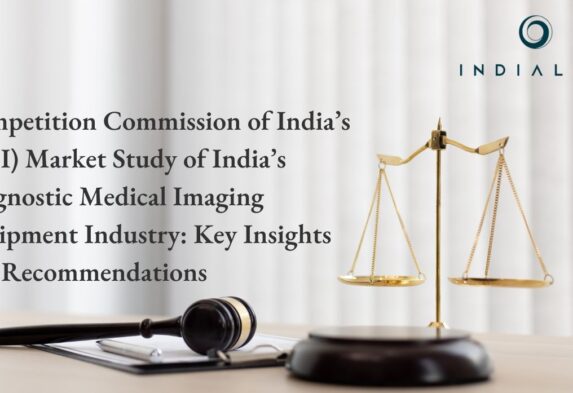Competition Commission of India’s (CCI) Market Study of India’s Diagnostic Medical Imaging Equipment Industry: Key Insights and Recommendations


Introduction
Market studies help competition authorities understand how specific markets function and assess competition within sectors. These research projects analyse market performance, regulations, and the behaviour of consumers and businesses. They also offer insights for recommending actions to governments, regulators, businesses, and industry groups.
The study gathers information through surveys, stakeholder meetings, focus groups, workshops, and written submissions, assuming that all data provided is complete, accurate, and truthful.
Recently, the Competition Commission of India (CCI) published key findings from its Market Study of the Diagnostic Medical Imaging (DMI) Equipment Industry, with a focus on MRI and CT scan machines. The study aimed to:
- Understand the value chain of the DMI industry, including the role and interactions of various stakeholders.
- Examine market structure and competition at each level of the value chain.
- Identify the challenges faced by different stakeholders.
Table of Contents
Key Findings
1. Market Overview and Growth
- The DMI equipment market is expanding, with an estimated value of INR 20,968 crores by 2026, growing at a 9.8% CAGR.
- However, 80% of equipment is imported due to supply chain challenges, limited infrastructure, and high setup costs.
- Key import sources:
- CT scanners: China, USA, and Germany
- MRI machines: China, USA, and the Netherlands
2. Value Chain and Market Structure
The market comprises:
- Original Equipment Manufacturers (OEMs)
- OEM-authorized dealers
- Independent refurbished equipment suppliers
- After-sales service providers
- Hospitals, diagnostic centres, and patients
3. Level of Competition at Various Nodes of the Value Chain
A. New Equipment Market
- Oligopolistic conditions exist, with a few OEMs (e.g., Siemens, GE, Philips) dominating:
- CT scan machines: 98% market share
- MRI machines (by revenue): 91% market share
- Moderate to high entry barriers exist due to technology access, import dependency, and brand preferences for domestic manufacturers.
- OEMs have a competitive advantage through financial strength, R&D capabilities, and market experience.
- Competitive pricing arises from hospitals’ and diagnostic centres’ countervailing buying power.
B. Refurbished Equipment Market
- Fragmented market, offering budget-friendly options with involvement from both OEMs and independent suppliers.
- Customers: Smaller healthcare facilities seeking affordable equipment options.
- Dynamic competition leads to competitive pricing due to the presence of multiple players.
C. After-Sales Services Market
- Competition is based on factors such as equipment lifespan, bundled service packages, and the total cost of ownership throughout the equipment’s lifecycle.
- Refurbished equipment market sees dynamic competition among suppliers providing after-sales services.
D. Role of Hospitals and Diagnostic Centres
- Hospitals and diagnostic centres act as both buyers and service providers, occupying a central position in the value chain.
- Entry barriers exist due to high equipment costs, but they can negotiate favourable terms with OEMs, ensuring competitive purchases.
- As service providers, they face intense competition not only in pricing but also in terms of the technology and equipment used.
- The study found competitive conditions across the six cities covered in the analysis.
E. Patients’ Role
- Patients compare prices across centres, benefiting from discounts and a variety of service options.
4. Challenges Identified
- Shortage of skilled personnel
- Delays in procurement of spare parts
- Complex procurement processes
- High investment costs
Recommendations to Improve Competition and Efficiency
1. Promote Domestic Manufacturing
- Increase assembly units and gradually shift toward full-scale local production to reduce import dependency.
2. Develop Infrastructure
- Encourage public-private partnerships (PPP) to attract investments and enhance quality through more NABL-accredited testing laboratories.
3. Enhance Transparency
- OEMs should adopt self-regulation to ensure transparency in pricing, spare parts availability, and after-sales services.
4. Open Market for Spare Parts
- Provide independent suppliers and service providers with better access to spare parts to foster competition.
Conclusion
The CCI’s market study of India’s Diagnostic Medical Imaging Equipment Industry underscores the critical need for local manufacturing, transparent business practices, and collaborative infrastructure development to reduce import dependency and promote sustainable competition in the DMI equipment industry. A competitive market will drive innovation, improve efficiency, and deliver better services to consumers, ensuring long-term growth in India’s healthcare sector.
Contact Information
For more information, contact us at: contact@indialaw.in




